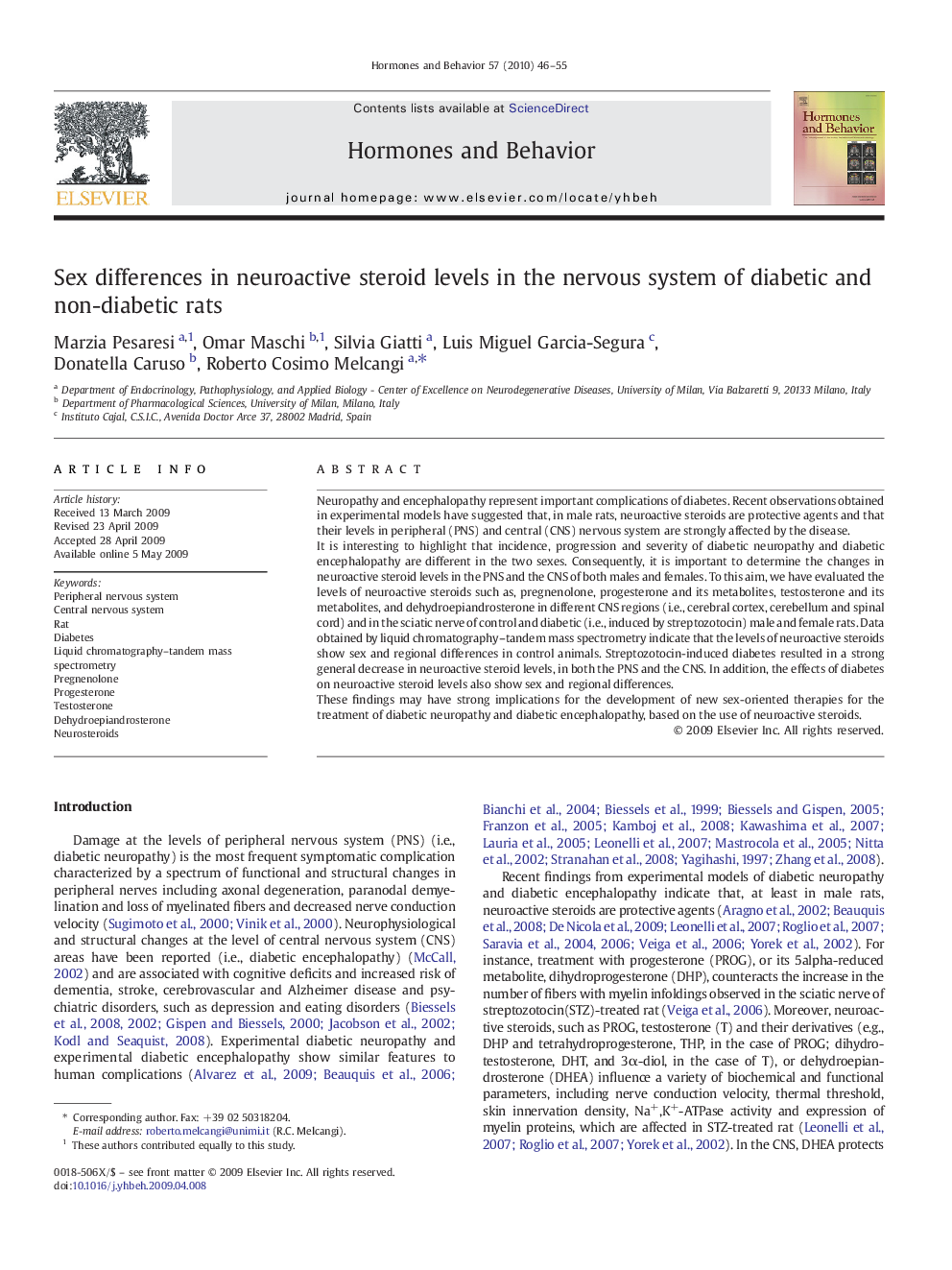| Article ID | Journal | Published Year | Pages | File Type |
|---|---|---|---|---|
| 323705 | Hormones and Behavior | 2010 | 10 Pages |
Neuropathy and encephalopathy represent important complications of diabetes. Recent observations obtained in experimental models have suggested that, in male rats, neuroactive steroids are protective agents and that their levels in peripheral (PNS) and central (CNS) nervous system are strongly affected by the disease.It is interesting to highlight that incidence, progression and severity of diabetic neuropathy and diabetic encephalopathy are different in the two sexes. Consequently, it is important to determine the changes in neuroactive steroid levels in the PNS and the CNS of both males and females. To this aim, we have evaluated the levels of neuroactive steroids such as, pregnenolone, progesterone and its metabolites, testosterone and its metabolites, and dehydroepiandrosterone in different CNS regions (i.e., cerebral cortex, cerebellum and spinal cord) and in the sciatic nerve of control and diabetic (i.e., induced by streptozotocin) male and female rats. Data obtained by liquid chromatography–tandem mass spectrometry indicate that the levels of neuroactive steroids show sex and regional differences in control animals. Streptozotocin-induced diabetes resulted in a strong general decrease in neuroactive steroid levels, in both the PNS and the CNS. In addition, the effects of diabetes on neuroactive steroid levels also show sex and regional differences.These findings may have strong implications for the development of new sex-oriented therapies for the treatment of diabetic neuropathy and diabetic encephalopathy, based on the use of neuroactive steroids.
